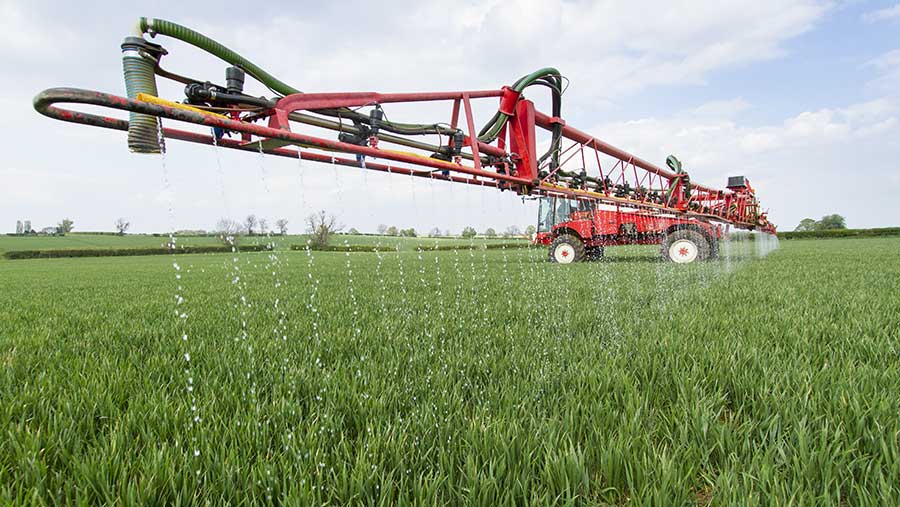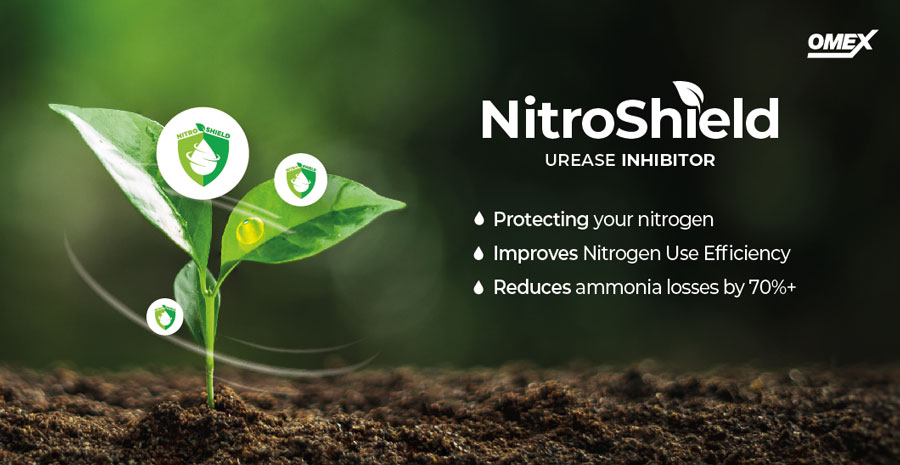Advertiser content
OMEX launch new urease inhibitor to reduce ammonia emissions
Provided by
Grow With OMEX.
OMEX have been working with farmers, across the globe, to help sustainably feed a growing population for over 45 years. From solution to specialty liquid fertilisers, OMEX work with farmers to boost crop nutrition, plant health and maximise yield. OMEX offer national coverage and local service, with local Liquid Fertiliser experts located throughout the UK, helping farmers work towards Net Zero and reducing agricultural emissions. With innovative SAP analysis and soil sampling services, and a global R&D team, farmers can ensure they’re giving their crop exactly what it needs to flourish, without over or under applying.
Find out more at omex.com
OMEX Agriculture has launched a new urease inhibitor NitroShield, that has been demonstrated to reduce ammonia emissions from urea containing fertilisers by more than 70%,can lift winter wheat yields by 0.3t/ha and grain protein by 0.2%.
Defra has announced new rules on ammonia mitigation for urea fertilisers, which include the use of liquid UAN fertilisers.
The new ruling means that from 2024, unless mitigation measures are implemented, any fertiliser containing urea such as UAN, excluding urea solutions for foliar applications, applied after the 1 April each year must include a urease inhibitor.
The government has agreed with the NFU and industry partners that a farming industry self-regulation approach will work best for the environment and food production.
These guidelines will be applied through the Red Tractor Assurance Standard.
Adding NitroShield to liquid nitrogen applications can help farmers meet this requirement whilst improving efficiency, and at the most effective application rates.
With less ammonia lost to the atmosphere and contained within the soil, the nitrogen applied alongside this innovative urease inhibitor is better utilised by crops.
NitroShield has undergone three years of rigorous trials. It meets the government target of reducing ammonia emissions by 70%, which will help farmers grow more sustainably.
During the trials OMEX has also tested for the most efficient application rate.
“Urease inhibitors work by blocking the urease enzyme from hydrolysing urea, which causes ammonia losses,” explains says OMEX technical development manager David Booty.
“NitroShield has been specifically developed, and rigorously tested, to meet government guidelines on reducing ammonia.
“NitroShield gives reliable reductions of over 70% in ammonia emissions when mixed with Nitroflo or Nitroflo S grades prior to application,” he says.
“The choice of whether to add it or not should be made on farm, on the day according to the date of application, soil and weather conditions and any other mitigation factors, such as if fertiliser is incorporated within 24 hours.”
Mr Booty recommends that NitroShield should be routinely used for all nitrogen applications after 31 March unless signed off as unnecessary by a FACTS qualified adviser.
“Rates can be reduced when soils are neutral or slightly acidic, or the crop canopy provides full coverage of the soil, the ambient temperature is not expected to be more than 15ºC within 24 hours of application, or a FACTS qualified advisor has recommended,” he says.
“Full rates should be used when soils are alkaline (pH >7.0), or when the crop canopy does not provide full coverage of the soil, or the ambient temperature is expected to exceed 15ºC within 24 hours of application.”




